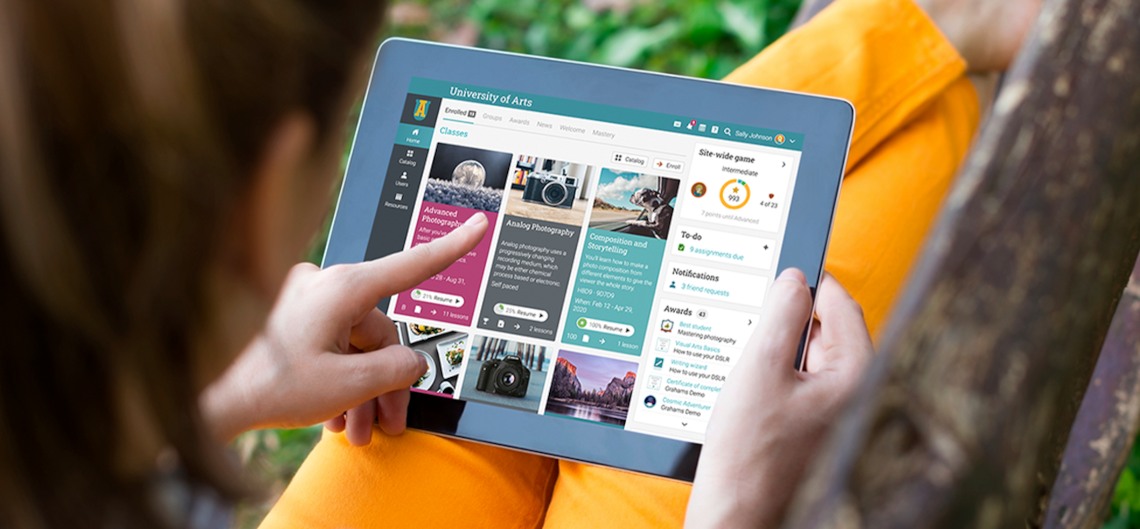Digitization has changed how we communicate, access services, and the extent of technology present in our lives. Ever since the internet emerged, we have witnessed a new reality among people: those who have access to technology and the internet, and those who don't. Although the digital divide was not caused by the pandemic, it was definitely exacerbated by it.
During the global health crisis, many problems transpired in our society in every field, with a significant impact on education. While technology helped us bridge physical distance, many people faced challenges because of poor or no internet connection, doubled by a lack of modern devices demanded by remote learning.
Besides all this, teachers and students faced additional challenges trying to adapt to the reality of online education and minimize the impact of poor or no edtech skills on the learning process.
Read more: On challenges and opportunities: Emergency remote teaching
The need to raise digital awareness
The pandemic has uncovered the issues we need to fix, especially the importance of a stable internet connection and technology in all major domains: health, education, social services, and employment.
While we have managed to adjust to the novelty of the situation on the go, we now need real solutions to cater to the needs of each individual, which will serve society as a whole.
In education, most students benefited from different forms of online schooling, which helped maintain learning as an essential life activity. However, two problematic situations emerged: some people lacked internet connection or devices, and many didn't have the necessary skills to use technology efficiently.
While teachers and students had in large numbers the support they needed to implement online learning solutions, people from low-income families have faced and are still facing the difficulties caused by the disparities in the so-called equality of chances.
The internet and technology cannot be considered a commodity anymore. They should be available to everyone regardless of their social background, ensuring the right to benefit from the same basic services as higher-income households.
The pandemic has opened our eyes to new ways of interacting, learning, and accessing services and has highlighted how much improvement is needed in every domain. Nonetheless, providing internet access and developing the necessary skills to use technology are more stringent than ever and are needed for:
- Economic opportunities: having edtech skills and an internet connection can provide career opportunities and higher income.
- Education development: learners could benefit from every online resource and app to acquire 21st-century skills and have a smooth workplace insertion.
- Social interaction: in dire times, technology helps bridge physical distance, allows people to connect and communicate, and nurtures and maintains relationships needed for a healthy life.
- Accessibility to services: more and more services can be accessed via technology, and we need to ensure everyone has equal access to them.
- Devices and resources: since technology has evolved so rapidly, it has impacted how we live. However, there are still major discrepancies between how low-income and high-income families benefit from devices and how much access they have to today's resources.
Technology has to be an equalizer and help narrow the digital divide.
Possible solutions to tackle the digital divide
Now that we have experienced the benefits and drawbacks of technology and the internet in times of a pandemic, we should use what we've learned to improve our future as a society. We have to consider some solutions that are not out of reach and make some changes:
Read more: What’s next? Lessons from the lockdown on traditional education
- In the US alone, 16.9 million children don’t have high-speed internet at home, and 22 percent of them rely on public Wi-Fi to do their homework or attend online classes. To address this, national and local governments should find ways to subsidize or provide free internet access to those who cannot afford it, or at least provide free digital access in libraries or community centers.
Read more: 4 Examples of the best digital access initiatives
- According to Pew Research Center, 30 percent of American adults have low tech readiness. What’s more, during the pandemic, those with children found it difficult to help them with online education. Consequently, schools and learning communities should design volunteering programs to teach people how to use technology and benefit from everything it has to offer.
- Students in low-income families have been disproportionately affected by the pandemic in ways that go beyond education. Since this is never a problem to be fixed individually, communities should find or create programs to tackle the digital divide challenges and build resilience against poverty and other social and health crises.
- Students lost more than six months of learning during the pandemic, but those from low-income families with no or poor internet access lost one year's worth of education. Therefore, authorities should design recovery plans for the underprivileged to help them access information, professional development, and services to build a stronger society, boost productivity, and improve life quality.
Read more: 6 Practical strategies for teaching across the digital divide
All in all
It's up to us as a society to tackle the digital divide and find long-term solutions for everyone in times of great reliance on the internet and technology. A digitally-savvy society benefits both individuals, in terms of personal development opportunities and higher life quality, and communities and the entire country, in terms of productivity and reliability.







